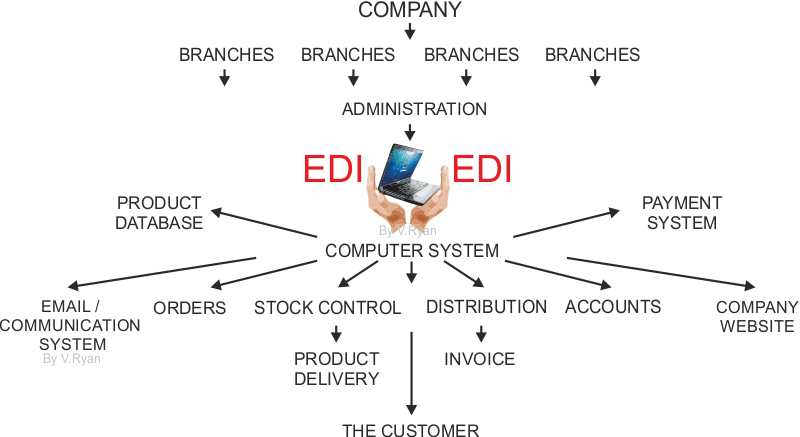Companies that use EDI, can transfer data from one branch to another and even across the world, with full confidence that the data can be accessed, edited and updated, without problems.
A very good example of a standardised document format is PDF. This type of document can be emailed and opened on most computer systems, including smart phones.
Reduces the overall costs of running a business, as the computer system carries out difficult and complicated tasks automatically.
The computer system monitors and controls most aspects of the business. Stock levels, order levels, accounts and invoices are known immediately, without the need for labourious manual intervention and accounting.
EDI eliminates the need for most paperwork, helping the environment.
Efficiency levels are very high, as human error is minimised. The effective flow of business is assured.
EDI systems enhance security for the customer and company.
Improved communication between employees and branches, due to the use of standardised document and data formats.

Systems need continual electronic protection, from viruses, hacking and potential fraud.
EDI systems need regular software updates.
In case of a systems failure, manual systems must also be in place to ensure that business continues.
Staff must recieve training, every time the EDI system is updated. This is a continuous investment.
Companies relying on EDI must invest in backup systems, in case the primary system fails.
Human input error is still potentially a problem, although the software being used should highlight most errors.
Data Protection Laws, protecting customers and employees, must be applied and adhered to by employees and the company.

